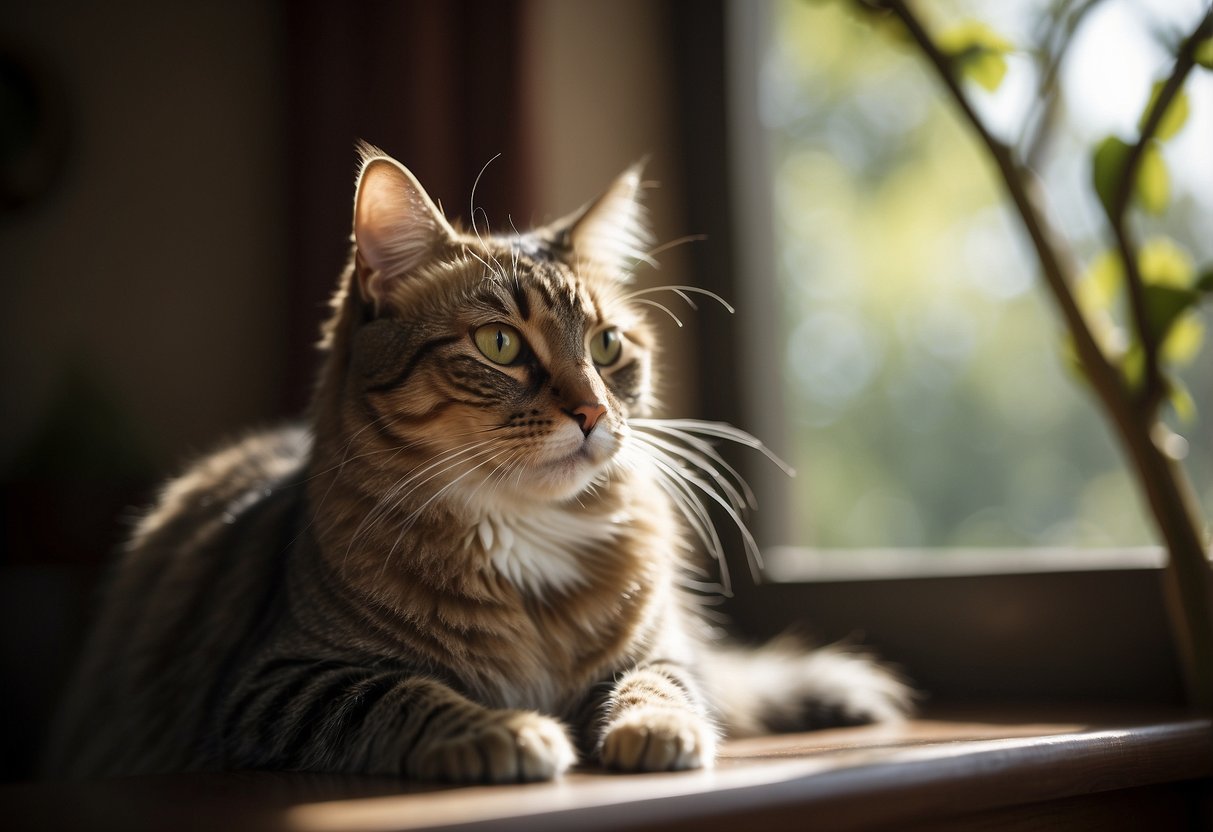
Socialization and Environment
Cats are influenced by their surroundings and how they interact with new people and other animals. Providing a stimulating home environment is vital to their well-being.
Introducing New People and Pets
Introducing a cat to new people or pets requires patience and a strategic approach. Start by allowing the cat to observe the newcomer at a distance, gradually decreasing the space as both parties become more comfortable. Use positive reinforcement, offering treats and gentle praise to create a positive association.
It’s crucial to give the cat a safe space, like a separate room, where it can retreat if it feels overwhelmed. This area should have familiar items such as toys and bedding to increase comfort. Always supervise initial interactions, intervening if any signs of stress or aggression appear.
Creating a Stimulating Home Environment
A stimulating environment can prevent boredom and reduce undesirable behaviors. Provide various toys, scratching posts, and climbing structures to keep the cat active and engaged. Rotating toys every few days can also maintain their interest.
Environmental enrichment can include interactive play sessions using string toys or laser pointers, encouraging natural hunting instincts. Consider using puzzle feeders to make mealtime more engaging and mentally stimulating.
Incorporate vertical spaces like shelves or cat trees, as cats enjoy observing their territory from higher vantage points. Regularly changing the environment or adding new elements can keep the cat curious and mentally agile, contributing to a happier, healthier pet.
Understanding Age-Related Changes
Cats experience significant behavioral and physical changes as they age. Understanding these changes can help cat owners provide the best care and ensure their cats stay healthy and happy.
Kittenhood to Adulthood
During kittenhood, cats are highly energetic and curious. They often engage in playful behaviors such as chasing, pouncing, and climbing. This period is crucial for socialization, and kittens learn essential skills through play. Regular interaction with humans and other animals helps them develop into well-adjusted adults.
By the time they reach adulthood, usually around one year of age, their behavior begins to stabilize. Adult cats are generally more independent, but they still require regular play and mental stimulation. Owners often notice a decrease in hyperactive behaviors, but each cat’s personality will influence how pronounced this change is.
Senior Cats: Special Considerations
As cats enter their senior years, around 7-10 years old, they may exhibit noticeable behavioral and physical changes. Senior cats often become less active, preferring to rest more frequently. This decrease in activity can sometimes lead to weight gain, so it’s important to monitor their diet closely.
Older cats may also develop arthritis or other joint issues, making it difficult for them to jump or climb as they used to. Providing accessible resting places and keeping their environment comfortable is important. Cognitive decline is another consideration; some senior cats might show signs of confusion or altered sleep patterns. Regular veterinary check-ups are vital to address these age-related health concerns.



